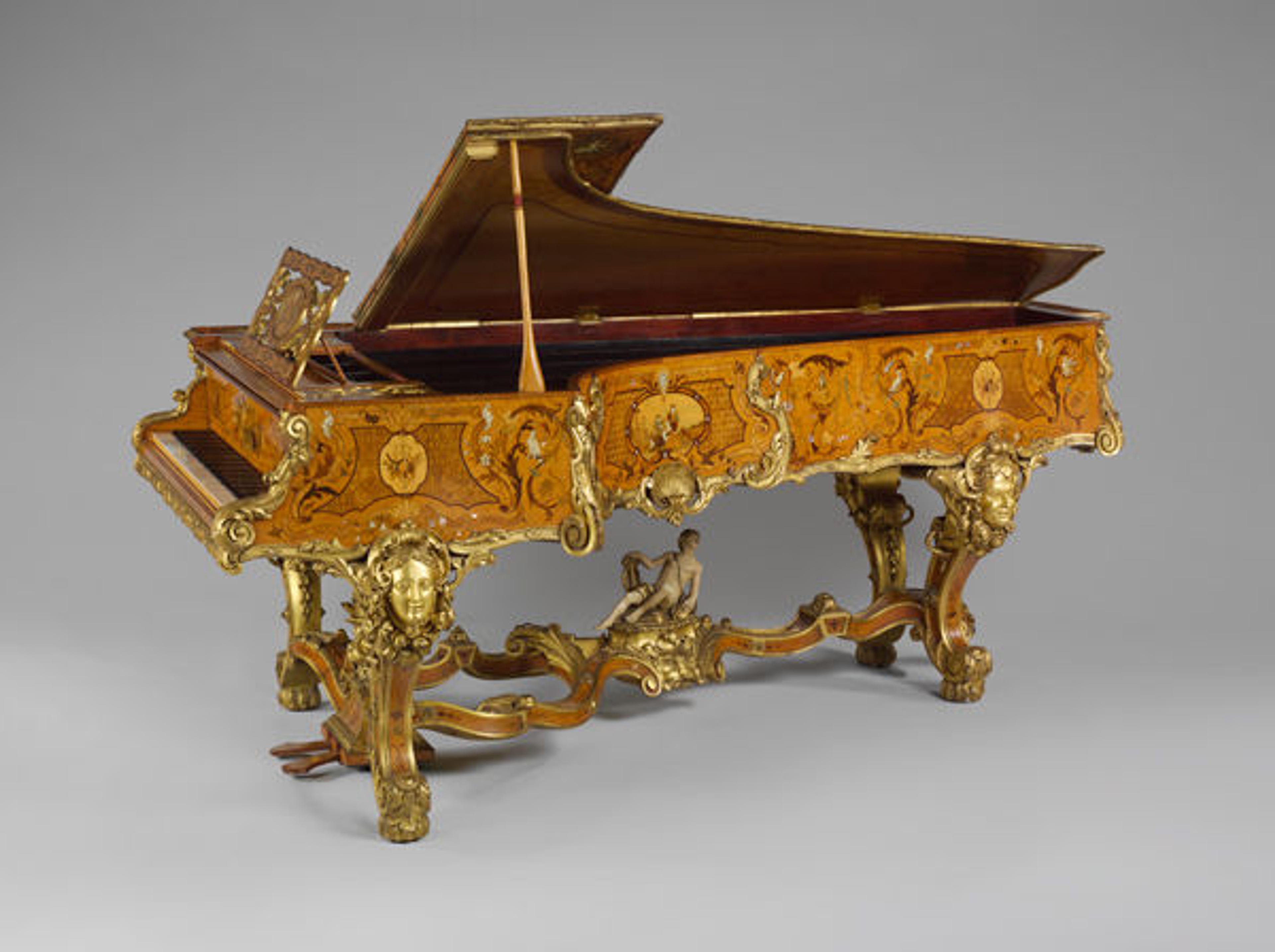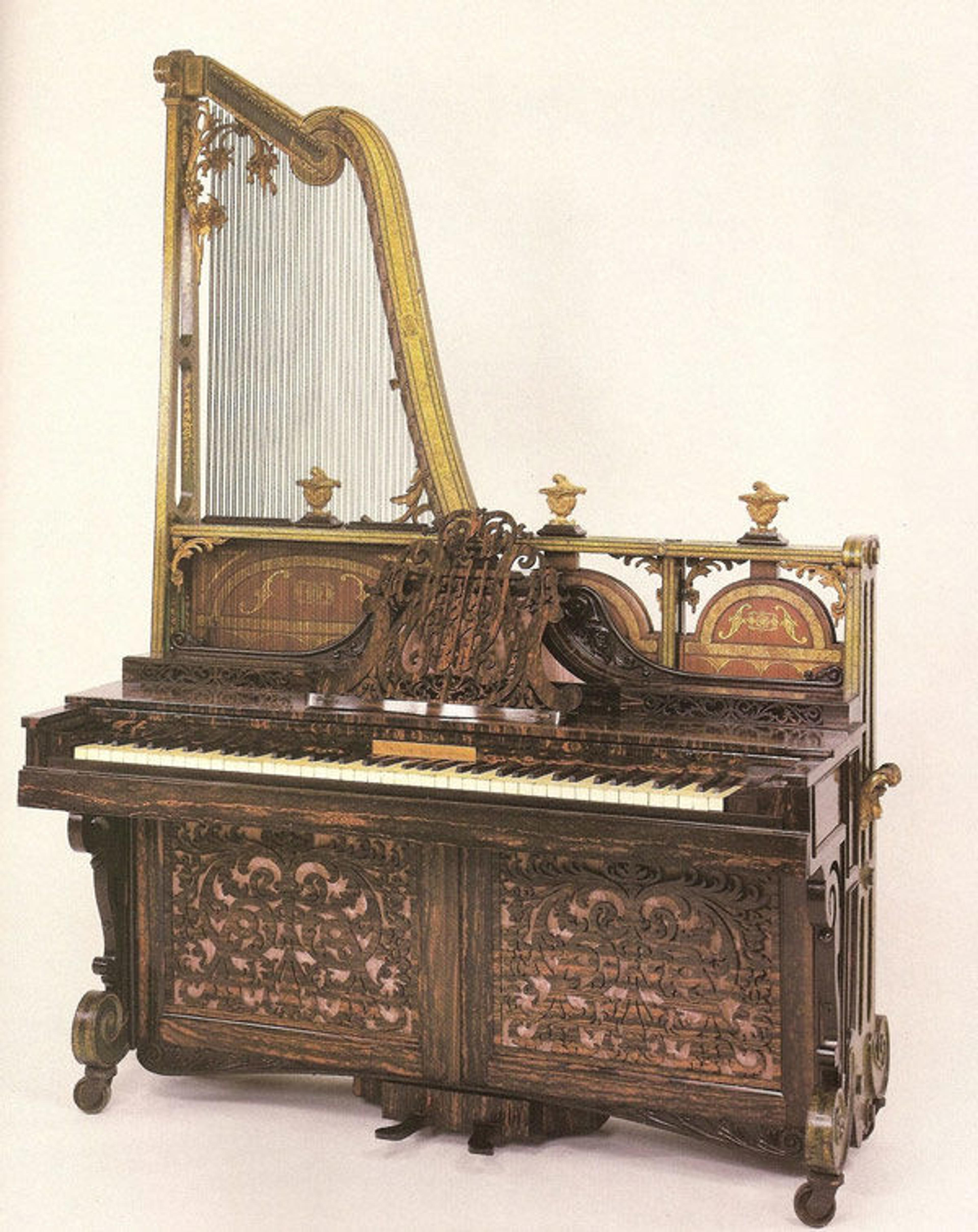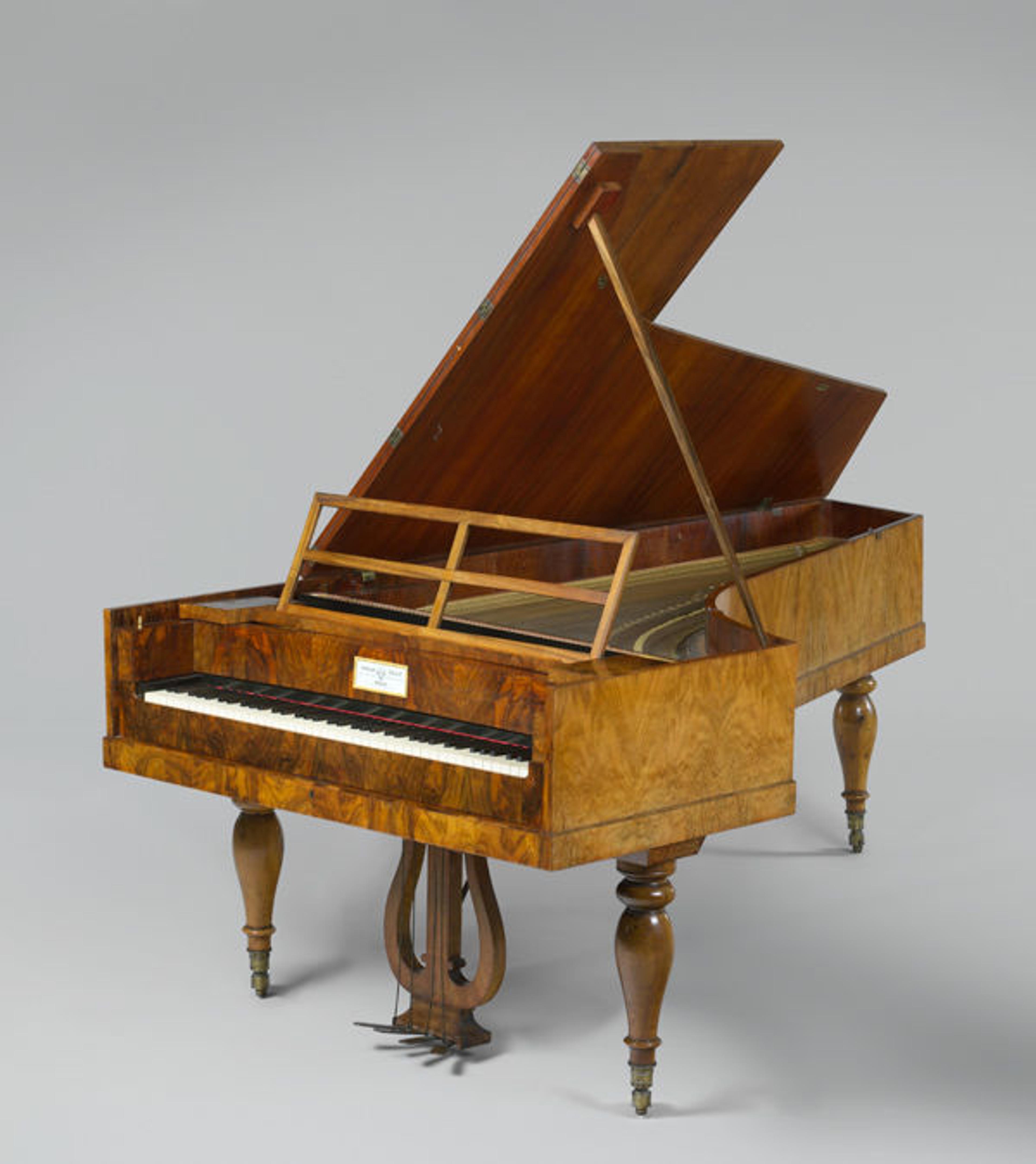Celebrating National Piano Month, Part One
«The piano has been an integral part of Western music since the late eighteenth century. Although invented around the year 1700, it took several decades before the instrument had become a favorite of composers and performers alike. The piano underwent enormous change in its first 150 years, and the two regional schools of instrument makers—located in Vienna and London—gave musicians a large choice of pianos with differing tonal characteristics. Versions of the instrument eventually developed that were space-efficient, first the square piano and later the upright, which allowed it to find its way into middle-class homes.»
In the nineteenth century the instrument grew larger and more powerful, as virtuosic soloists became international superstars and engaged in recital tours or performed concerti with increasingly larger orchestras. At the same time, the instrument became the primary source of home entertainment, and learning to play the piano became an important part of childhood education. The United States developed as a major producer of the instrument, with early centers in Philadelphia, Boston, and New York making instruments for a seemingly infinite domestic market. By the second half of the twentieth century, however, other forms of home entertainment that competed with the piano led to its decline from the once-ubiquitous place it held in culture, though the instrument is still to be found in many homes and most public buildings.
The musical instrument collection at The Metropolitan Museum of Art is home to one of the most important and comprehensive collections of historic pianos to be found anywhere in the world. The collection documents the instrument's history—from its invention through its golden age around the turn of the twentieth century. September is National Piano Month, and this is the first in a series of posts highlighting some of the most important, unusual, and visually interesting pianos from the Museum's collection, and includes interesting facts about each instrument.
Erard & Co. Grand Piano

Grand pianoforte, ca. 1840. Erard & Co., London, England, United Kingdom. Wood, various metals. The Metropolitan Museum of Art, New York, Gift of Mrs. Henry McSweeney, 1959 (59.76)
The satinwood-veneered case is decorated with marquetry made from dyed and natural-colored woods, ivory, mother-of-pearl, and metal. Decorative gilt carvings adorn the edges of the case and the stand, and the figure of Orpheus with his lyre can be seen reclining below the piano. Explore more of this piano's rich history in the Heilbrunn Timeline of Art History.
Fact: This art-case piano was designed by George H. Blake for Lord Foley, baron of Kidderminster, and commissioned for his residence at Witley Court in Worcestershire.
Joseph Böhm Grand Piano

Joseph Böhm (Austrian, 1786–ca.1850). Grand piano, ca. 1815–20. Wood, various materials. The Metropolitan Museum of Art, New York, Purchase, Rogers Fund; Mr. and Mrs. Thatcher M. Brown III, Mr. and Mrs. Philip J. Hess, Carroll Music Instrument Service Corp., The New York Flute Club Inc. and Piano Technicians; Guild Gifts; Gifts of Mrs. Etta M Helmer, Alice Getty, Mr. and Mrs. Henry Wellman, Mr. and Mrs. Peter M. F. Sichel, Craig E. Steese, Hilda Katz, Mr. and Mrs. Arthur A. Travis, and The Crosby Brown Collection of Musical Instruments, by exchange; and funds from various donors, 1982 (1982.138)
The sumptuous curved case has a beautiful veneer of elm, and the three legs are topped with carved Imperial eagles. Learn more about this piano in the Heilbrunn Timeline of Art History.
<p>Please enable flash to view this media. <a href="http://get.adobe.com/flashplayer/">Download the flash player.</a></p>
Ludwig van Beethoven (German, 1770–1826). Sonata in F Minor, Op. 2, No. 1, Movement 1, Allegro. Performed by Martin Souter on the Joseph Böhm grand piano. From Martin Souter in Beethoven Sonatas, Classical Communications, 2000
Fact: This grand piano was probably made for Marie Louise, the grand duchess of Parma, the second wife of Napoleon Bonaparte.
F. Beale & Co. "Euphonicon"

Upright harp piano, 1843. F. Beale & Co., London, England, United Kingdom. Various materials. The Metropolitan Museum of Art, New York, Gift of Mrs. Greenfield Sluder, 1944 (44.58)
Englishman John Stewart invented the "euphonicon" in 1841. It has three separate soundboards housed in the macassar ebony case, and the iron frame is gilt.
Fact: The unusual visual suggestion of the instrument is that it might be able to be played like a harp or sound like a harp, but it is, in fact, an upright piano.
John Geib and Son Square Piano

Pianoforte, 1810–15. Works attributed to John Geib and Son (in partnership 1804–15); case attributed to the workshop of Duncan Phyfe (1770–1854). Mahogany, mahogany and rosewood veneers, satinwood, ivory, gilded gesso, brass with white pine, maple, ash. The Metropolitan Museum of Art, New York, Gift of Eric M. Wunsch, 1969 (69.259)
The instrument itself is believed to have been made by a member of the Geib family, prominent builders in New York City in the early nineteenth century.
Fact: The case for this square piano was probably made in the workshop of the famed American furniture builder Duncan Phyfe.
Conrad Graf Grand Piano

Conrad Graf (Austrian, 1782–1851). Fortepiano, ca. 1838. Walnut-veneered spruce and oak. The Metropolitan Museum of Art, New York, Purchase, Amati Gifts, in memory of Frederick P. Rose, 2001 (2001.272)
Conrad Graf was one of the most important Viennese makers and built instruments for Beethoven, Czerny, Schubert, Chopin, Liszt, and Brahms. This example is in nearly pristine condition. Learn more about this piano and hear recordings of the instrument being performed in the Heilbrunn Timeline of Art History.
Fact: This piano is nearly identical to an example made for the composer Robert Schumann in 1839.
Follow Jayson on Twitter: @JayKerrDobney
Jayson Dobney
Jayson Dobney is the Frederick P. Rose Curator in Charge in the Department of Musical Instruments.
Follow Jayson on Twitter: @JayKerrDobney